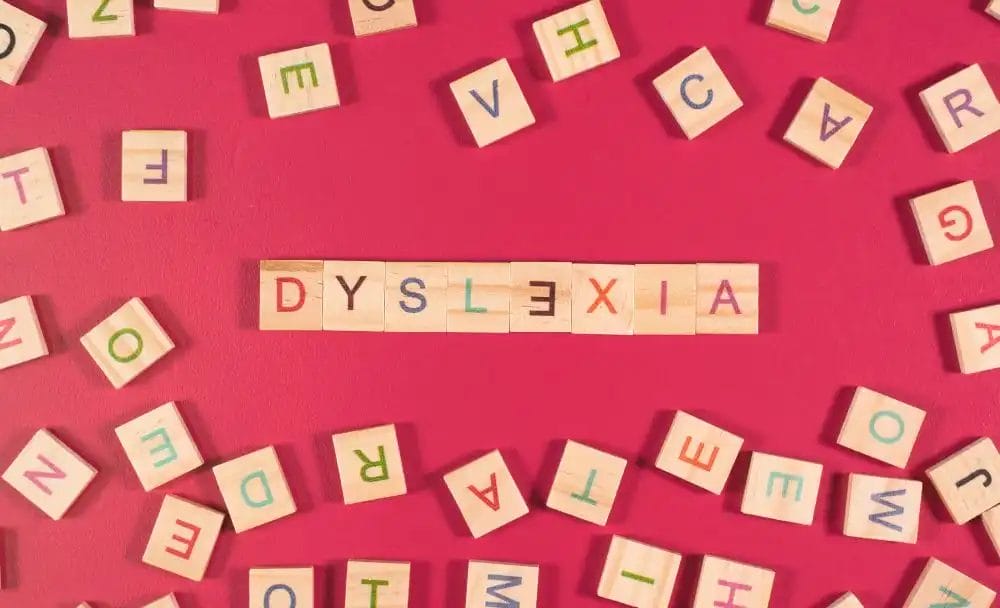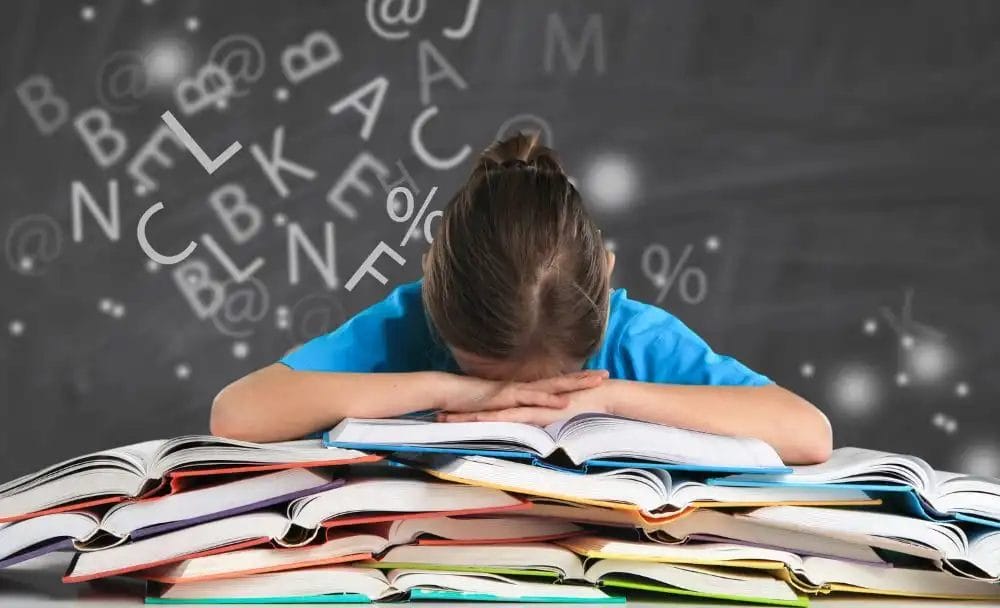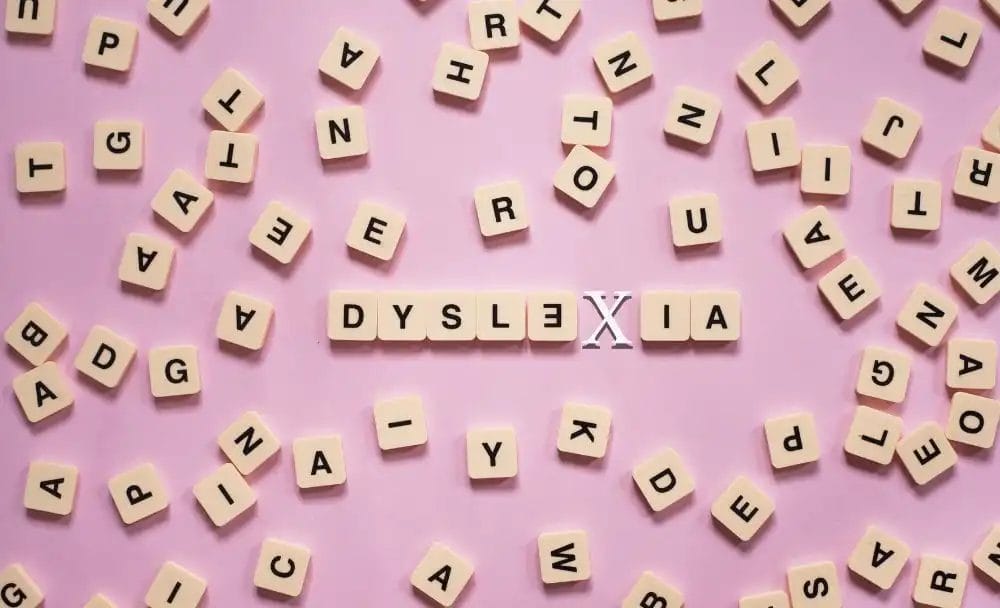This article is reviewed by Dr. Harimohan Chandola

Contrary to popular belief and widely prevalent misconceptions, dyslexia is not a condition of impaired brain development, low intelligence, hearing or visual impairment. It is simply a learning disorder that can be overcome with appropriate tutoring and specialized education programs. The condition involves difficulty reading due to problems identifying speech sounds and learning how they relate to letters and words. The term itself originates from German, but was created with Greek roots. The literal dyslexia meaning is “difficulty with words” from the Greek ‘dys’ meaning difficult and ‘lexis’ meaning word.
Based on study findings from different parts of India, it is clear that dyslexia has a high prevalence, affecting at least 1 in 10 children. Prevalence rates of dyslexia in children are estimated to be between 11 to 17%. Dyslexia affects children equally regardless of sex and race. (1,2,3)
Types & Dyslexia Causes
There are different types of dyslexia based on the cause and the severity of the disorder. The main types of dyslexia based on the cause are developmental and acquired. Developmental dyslexia is present from birth and is usually inherited from the parents. Acquired dyslexia occurs later in life due to a brain injury, stroke, or dementia. (4)
Developmental dyslexia can be further classified into primary and secondary dyslexia. Primary dyslexia is caused by inherited genes or a genetic mutation that leads to dysfunction in the left side of the brain. This type of dyslexia is more common and does not improve with age. Secondary dyslexia is caused by problems in brain development before or after birth, such as premature birth, low birth weight, infections, or exposure to toxins. This type of dyslexia is less common and may improve with age.
Dyslexia Symptoms
The specific symptoms of dyslexia can vary from person to person, but some common signs and symptoms include (5,6):
- Difficulty with reading:
- Struggles with accurate and fluent word recognition.
- May read slowly and with errors.
- May have difficulty decoding unfamiliar words.
- Often guesses words based on context rather than reading them phonetically.
- Difficulty with spelling:
- Has trouble spelling words correctly.
- May have inconsistent spelling, even of common words.
- Frequently omits, adds, or substitutes letters or sounds in words.
- Problems with writing:
- Difficulty organizing thoughts and ideas in writing.
- May have poor handwriting and difficulty with fine motor skills.
- Challenges with phonological awareness:
- Struggles to break words into individual sounds (phonemic awareness).
- Difficulty blending sounds together to form words.
- Poor reading comprehension:
- May read a passage but have difficulty understanding and retaining the information.
- Slow reading and writing:
- Takes more time than peers to complete reading and writing tasks.
- May exhibit signs of frustration or low self-esteem related to academic challenges.

How Is Dyslexia Diagnosed
There are no single “dyslexia tests” that can definitively diagnose the condition on their own. A comprehensive assessment is necessary to diagnose dyslexia accurately and to rule out other potential causes of reading and writing difficulties. This can include(7):
- Clinical Interviews: Gathering information about the individual’s developmental history, educational experiences, and family history of learning difficulties.
- Cognitive Assessment: Assessing various cognitive abilities, including memory, processing speed, and verbal and nonverbal reasoning.
- Phonological Awareness and Phonemic Awareness Tests: Evaluating the individual’s ability to work with sounds and phonemes, which is often a key area of difficulty for individuals with dyslexia.
- Reading and Writing Assessments: Measuring reading and writing skills, including accuracy, fluency, and comprehension. This may involve standardized tests and informal assessments.
- Observations: Observing the individual’s reading and writing behaviours in a controlled environment.
- Behavioural and Emotional Assessments: Assessing emotional and behavioural aspects related to reading difficulties, as well as the impact of dyslexia on self-esteem and well-being.
- Teacher and Parent Input: Collecting information from teachers and parents regarding the individual’s classroom performance and behaviours.

Dyslexia Treatment
While there are no allopathic medications for dyslexia, there are Ayurvedic herbal supplements that can support therapy to improve outcomes. As there is no specific medication involved, conventional approaches of dyslexia treatment involve learning and educational programs as well as behavioural therapy to support children with dyslexia (7). These therapies align with Ayurvedic dyslexia treatment approaches. They include the following:
- Psychotherapy: This can help people with dyslexia cope with their emotions, such as frustration, anxiety, or low self-esteem, that may result from their learning difficulties. Psychotherapy can also help them develop strategies to deal with academic and social problems.
- Reading program: This is a specialized instruction that focuses on teaching children with dyslexia how to recognize and use the sounds and letters of language. Reading programs may use multisensory techniques, such as hearing, seeing and touching, to help children with dyslexia learn and remember words (8). Reading programs may also include phonics, comprehension, fluency, and vocabulary skills.
- Individual education plan: This is a customized plan that outlines the specific needs and goals of a person with dyslexia and how the school will provide support and accommodations to help them succeed. An individual education plan may include extra time for tests, modified assignments, assistive technology, or tutoring.
- Ayurvedic herbs: The four Medhya Rasayanas including Mandukaparni, Shankhapushpi, Madhuyashti and Guduchi are described as intellect-promoting drugs and may also be used in formulations such as Brahmi Ghrita or Ashtanga Ghrita to treat dyslexia. Although more evidence is needed, the research so far is encouraging (9).
The effectiveness of these treatments may vary depending on the individual’s characteristics, such as age, severity of dyslexia, motivation, and other factors. A systematic review and meta-analysis of dyslexia treatment studies found that the overall average effect size for treatment efficacy was modest, with a mean standardized difference of 0.38 (10). This means that the average improvement in reading skills after treatment was small but statistically significant.
Conclusion
When it comes to effectively managing dyslexia to give a child the best chance at success, early intervention is most important. If you have any reason to believe that your child may have dyslexia, make it a point to talk to your doctor and get an accurate diagnosis. With timely and appropriate intervention, children with dyslexia can perform just as well as any other kids.
FAQs
Will dyslexia limit my child’s abilities?
There is no connection between dyslexia and intelligence. In fact, there are many children with dyslexia who have achieved great creative and professional success as adults.
Can you outgrow dyslexia?
No, you cannot outgrow dyslexia. Dyslexia is a lifelong condition that affects how the brain processes language and reading. However, with proper instruction and support, people with dyslexia can improve their reading skills and overcome their challenges.
Are there any famous people with dyslexia?
Yes, the list is long and includes Hollywood actors like Tom Cruise and Keanu Reeves, as well as the author Ankit Fadia and the founder of Khan Academy, Salman Khan.
Disclaimer: This article is written from a health and lifestyle perspective. It is for general information and not meant to substitute any medical advice. Please consult your doctor for appropriate medical consultation.
References:
- https://www.ncbi.nlm.nih.gov/pmc/articles/PMC7320732/
- https://www.ijpn.in/article.asp?issn=2231-1505;year=2021;volume=18;issue=1;spage=23;epage=28;aulast=Goel;type=0
- https://www.ijpn.in/article.asp?issn=2231-1505;year=2021;volume=18;issue=2;spage=84;epage=88;aulast=Rajesh
- https://www.ncbi.nlm.nih.gov/pmc/articles/PMC6971836/
- https://www.ncbi.nlm.nih.gov/pmc/articles/PMC7105858/
- https://medlineplus.gov/ency/article/001406.htm
- https://www.ncbi.nlm.nih.gov/pmc/articles/PMC2967798/
- https://pubmed.ncbi.nlm.nih.gov/9529784/
- https://www.ncbi.nlm.nih.gov/pmc/articles/PMC3665203/
- https://link.springer.com/article/10.3758/s13428-021-01549-x













